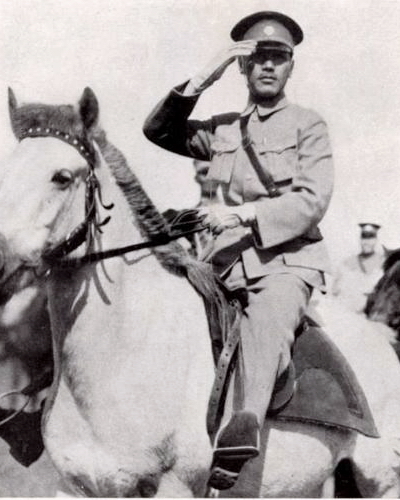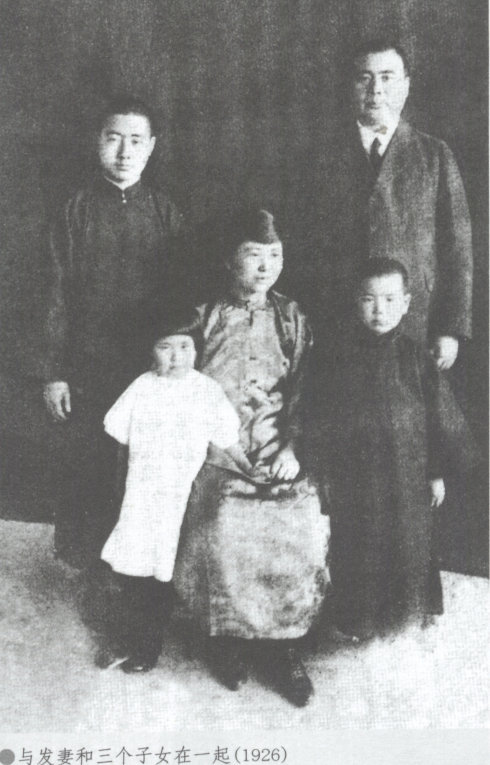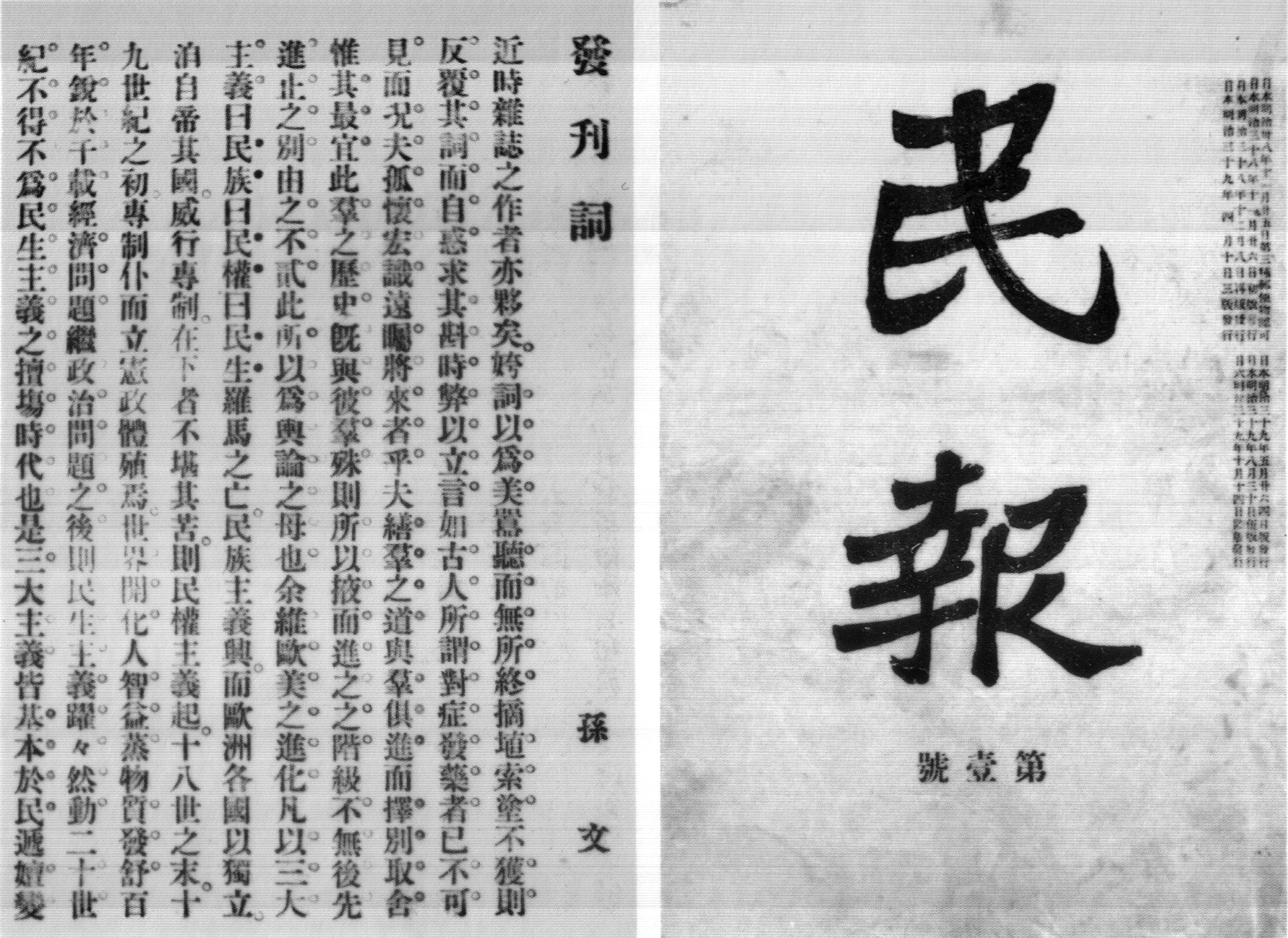|
Guominjun
The Guominjun (), also known as the Kuominchun, abbreviated as GMJ and KMC, was a military faction founded by Feng Yuxiang, Hu Jingyi and Sun Yue during China's Warlord Era. The KMC had control of much of Northwest China, including Shaanxi, Chahar and Suiyuan, hence its other name, the Northwest Army (西北軍; not to be confused with the later army of the same name under Yang Hucheng). History The Guominjun was formed when Feng betrayed the Zhili clique during the Second Zhili–Fengtian War with the Fengtian clique in 1924. The Guominjun occupied Beijing, captured Zhili leader Cao Kun and expelled former Qing dynasty emperor Puyi from the Forbidden City. In late 1925, Fengtian general Guo Songling defected to the KMC; this sparked the Anti-Fengtian War against Zhang Zuolin. The Guominjun was incorporated into the Kuomintang's National Revolutionary Army as the "Second Collective Army" in 1928 during the Northern Expedition, and fought alongside the KM ... [...More Info...] [...Related Items...] OR: [Wikipedia] [Google] [Baidu] |
Anti-Fengtian War
The Anti-Fengtian War () was the last major civil war within the Republic of China's northern Beiyang government prior to the Northern Expedition. It lasted from November 1925 to April 1926 and was waged by the Guominjun against the Fengtian clique and their Zhili clique allies. The war ended with the defeat of the Guominjun and the end of the provisional executive government. The war is also known as either Guominjun-Fengtian War (Guófèng zhànzhēng, 国奉战争), or the Third Zhili–Fengtian War (Dì sān cì zhífèng zhànzhēng, 第三次直奉战争). Cause The result of the Second Zhili–Fengtian War had led to the creation of a provisional executive government in Beijing in November 1924, where an informal triumvirate formed by Fengtian's Zhang Zuolin, the Guominjun's Feng Yuxiang and the Anhui clique's Duan Qirui had ruled. Duan's position as head of state was merely as a figurehead, however, as his clique had been almost destroyed. His small army of bodyguards op ... [...More Info...] [...Related Items...] OR: [Wikipedia] [Google] [Baidu] |
Northern Expedition
The Northern Expedition was a military campaign launched by the National Revolutionary Army (NRA) of the Kuomintang (KMT) against the Beiyang government and other regional warlords in 1926. The purpose of the campaign was to reunify China proper, China, which Warlord Era, had become fragmented in the aftermath of the 1911 Revolution. The expedition was led by Generalissimo Chiang Kai-shek, and was divided into two phases. The first phase ended in a 1927 political split between two factions of the KMT: the right-leaning Nanjing Nationalist government, faction, led by Chiang, and the Government of the Republic of China in Wuhan, left-leaning faction in Wuhan, led by Wang Jingwei. The split was partially motivated by Chiang's Shanghai massacre, Shanghai Massacre of Communists within the KMT, which marked the end of the First United Front. In an effort to mend this schism, Chiang Kai-shek stepped down as the commander of the NRA in August 1927, and went into exile in Japan. The sec ... [...More Info...] [...Related Items...] OR: [Wikipedia] [Google] [Baidu] |
Warlord Era
The Warlord Era was the period in the history of the Republic of China between 1916 and 1928, when control of the country was divided between rival Warlord, military cliques of the Beiyang Army and other regional factions. It began after the death of Yuan Shikai, the President of the Republic of China, President of China after the Xinhai Revolution had overthrown the Qing dynasty and established the Republic of China (1912–1949), Republic of China in 1912. Yuan's death on 6 June 1916 created a power vacuum which was filled by Warlord, military strongmen and widespread violence, chaos, and oppression. The Nationalist Kuomintang (KMT) government of Sun Yat-sen, based in Guangzhou, began to contest Yuan's Beiyang government based in Beijing for recognition as the legitimate government of China. The most powerful cliques were the Zhili clique led by Feng Guozhang, who controlled several northern provinces; the Anhui clique led by Duan Qirui, based in several southeastern provinces ... [...More Info...] [...Related Items...] OR: [Wikipedia] [Google] [Baidu] |
Sun Yue (warlord)
Sun Yue (; 1878–1928) was a Chinese warlord and member of the Guominjun and governor at various times of Hebei, Henan and Shaanxi. Sun Yue was born in 1878 in Gaoyang, Hebei, China. In 1903, he was admitted to the Baoding Beiyang Army Accelerated Arms School. In 1904, he joined the Xingzhong Society and in the same year established the "Weekly Tea Party" in Chunshu Hutong, Baoding. In 1905, he graduated from the Armed Forces Academy and served successively as artillery sentry officer of the Army's Third Town, third-class staff officer, etc. In 1907, he entered Army University. In the same year, he established the Hebei (North China) branch of the Tongmenghui in Baoding Huoshen Temple to promote the slogan of "driving out the Tartars, restoring China, establishing the Republic of China, and equalizing land rights." In 1909, he graduated from Army University and returned to No. 3 Town as a second-class staff officer and instructor. He met revolutionaries Bai Yayu, Wang Jinmin ... [...More Info...] [...Related Items...] OR: [Wikipedia] [Google] [Baidu] |
Feng Yuxiang
Feng Yuxiang (; ; 6 November 1882 – 1 September 1948), courtesy name Huanzhang (焕章), was a Chinese warlord and later general in the National Revolutionary Army. He served as Vice Premier of the Republic of China from 1928 to 1930. At the start of the 1911 Revolution, Feng was an officer in the ranks of Yuan Shikai's Beiyang Army. He initially joined forces with the revolutionaries, but came to support Yuan's regime. In 1914, he converted to Christianity, earning him the nickname the "Christian General". He became a warlord in Northwest China, based in Shaanxi, and rose to a high rank within the Zhili clique, a powerful warlord faction. In 1924, during the Second Zhili-Fengtian war, Feng launched the Beijing Coup, which knocked the Zhili out of power, and re-organised his troops as the Guominjun. He brought Sun Yat-sen to Beijing for negotiations on re-unification, but this was not realized. In 1926, Feng was defeated by the Zhili and Fengtian cliques in the An ... [...More Info...] [...Related Items...] OR: [Wikipedia] [Google] [Baidu] |
1924 Beijing Coup
The Beijing Coup () was the October 1924 ''coup d'état'' by Feng Yuxiang against Chinese President Cao Kun, leader of the Zhili warlord faction. Feng called it the Capital Revolution (). The coup occurred at a crucial moment in the Second Zhili–Fengtian War and allowed the pro-Japanese Fengtian clique to defeat the previously dominant Zhili clique. Followed by a brief period of liberalization under Huang Fu, this government was replaced on 23 November 1924, by a conservative, pro-Japanese government led by Duan Qirui. The coup alienated many liberal Chinese from the Beijing government. Events In 1923 Cao Kun became president by bribing the National Assembly. His Zhili clique, whose military was commanded by Wu Peifu, had already established itself as the dominant military force in China through a succession of resounding military victories. However, Cao was not satisfied with being just a strongman and wished the prestige of being officially titled head of state. After ou ... [...More Info...] [...Related Items...] OR: [Wikipedia] [Google] [Baidu] |
Hu Jingyi
Hu Jingyi (; 1892 – 1925), Chinese general, warlord and military governor of Henan (1924–25) during the Warlord Era of China. Hu Jingyi was born on 4 June 1892, Fuping County, Shaanxi. He joined the Chinese Revolutionary Alliance in 1910. Following the Wuchang Uprising in 1911 he led a revolt in Shaanxi. He became a general of Kuomintang forces during the "Second Revolution" against Yuan Shikai's dictatorship in 1913. He held several posts in the Shaanxi army over the following decades. During the Second Zhili–Fengtian War in the autumn of 1924, Feng Yuxiang betrayed the Zhili clique when he led his army from the battlefield to execute the Beijing coup, detaining its leader President Cao Kun, and reorganized his forces as the Guominjun. Hu was named deputy commander-in-chief and the commander of the 3rd Army as well as governor of Henan. The Soviets decided to assist Feng with advisers and assistance in arming the Guominjun, with the intent of forming another movement l ... [...More Info...] [...Related Items...] OR: [Wikipedia] [Google] [Baidu] |
Second Zhili–Fengtian War
The Second Zhili–Fengtian War (Second Chihli-Fengtien War; ) of 1924 was a conflict between the Japanese-backed Fengtian clique based in Manchuria, and the more liberal Zhili clique controlling Beijing and backed by Anglo-American business interests. The war is considered the most significant in China's Warlord era, with the Beijing coup by Christian warlord Feng Yuxiang leading to the overall defeat of the Zhili clique. During the war the two cliques fought one large battle near Tianjin in October 1924, as well as a number of smaller skirmishes and sieges. Afterwards, both Feng and Zhang Zuolin, the latter being ruler of the Fengtian clique, appointed Duan Qirui as a figurehead prime minister. In south and central China, more liberal Chinese were dismayed by the Fengtian's advance and by the resulting power vacuum. A wave of protests followed. The war also distracted the northern warlords from the Soviet-backed Nationalists based in the southern province of Guangdong, allowing ... [...More Info...] [...Related Items...] OR: [Wikipedia] [Google] [Baidu] |
Yang Hucheng
Yang Hucheng () (26 November 1893 – 6 September 1949) was a Chinese general during the Warlord Era of Republican China and Kuomintang (KMT) general during the Chinese Civil War. Warlord years Yang Hucheng joined the Xinhai Revolution in his youth and had become a popular warlord of Shaanxi Province by 1926. Following the defeat of Feng Yuxiang and Yan Xishan in the Central Plains War of 1930, Yang allied himself with the Kuomintang's Republic of China government (the Nanjing Nationalist government), and became commander of the Kuomintang's Northwestern Army. Ordered to destroy the newly established Chinese Communist Party (CCP) stronghold at Yan'an with Zhang Xueliang's Northeastern Army in 1935, both Yang and Zhang were impressed with the Communists' determined defense and fighting capabilities. They were also convinced by the CCP proposal for a united Chinese defense against the Japanese invasion of China, in contrast to the Kuomintang strategy of "first interna ... [...More Info...] [...Related Items...] OR: [Wikipedia] [Google] [Baidu] |
Kuomintang
The Kuomintang (KMT) is a major political party in the Republic of China (Taiwan). It was the one party state, sole ruling party of the country Republic of China (1912-1949), during its rule from 1927 to 1949 in Mainland China until Retreat of the government of the Republic of China to Taiwan, its relocation to Taiwan, and in Taiwan Martial law in Taiwan, ruled under martial law until 1987. The KMT is a Centre-right politics, centre-right to Right-wing politics, right-wing party and the largest in the Pan-Blue Coalition, one of the two main political groups in Taiwan. Its primary rival is the Democratic Progressive Party (DPP), the largest party in the Pan-Green Coalition. As of 2025, the KMT is the largest single party in the Legislative Yuan and is chaired by Eric Chu. The party was founded by Sun Yat-sen in 1894 in Honolulu, Hawaii, as the Revive China Society. He reformed the party in 1919 in the Shanghai French Concession under its current name. From 1926 to 1928, the K ... [...More Info...] [...Related Items...] OR: [Wikipedia] [Google] [Baidu] |
Three Principles Of The People
The Three Principles of the People (), also known as the Three People's Principles, San-min Doctrine, San Min Chu-i, or Tridemism is a political philosophy developed by Sun Yat-sen as part of a philosophy to improve China during the Republican Era. The three principles are often translated into and summarized as nationalism, democracy, and the livelihood of the people (or welfarism). This philosophy has been claimed as the cornerstone of the nation's policy as carried by the Kuomintang; the principles also appear in the first line of the national anthem of the Republic of China. Origins When the Revive China Society was formed in 1894, Sun only had two principles: nationalism and democracy. He picked up the third idea, welfare, during his three-year trip to Europe from 1896 to 1898.Li Chien-Nung, translated by Teng, Ssu-yu, Jeremy Ingalls. ''The political history of China, 1840–1928''. Princeton, NJ: Van Nostrand, 1956; rpr. Stanford University Press. , . pp. 203–206 ... [...More Info...] [...Related Items...] OR: [Wikipedia] [Google] [Baidu] |






